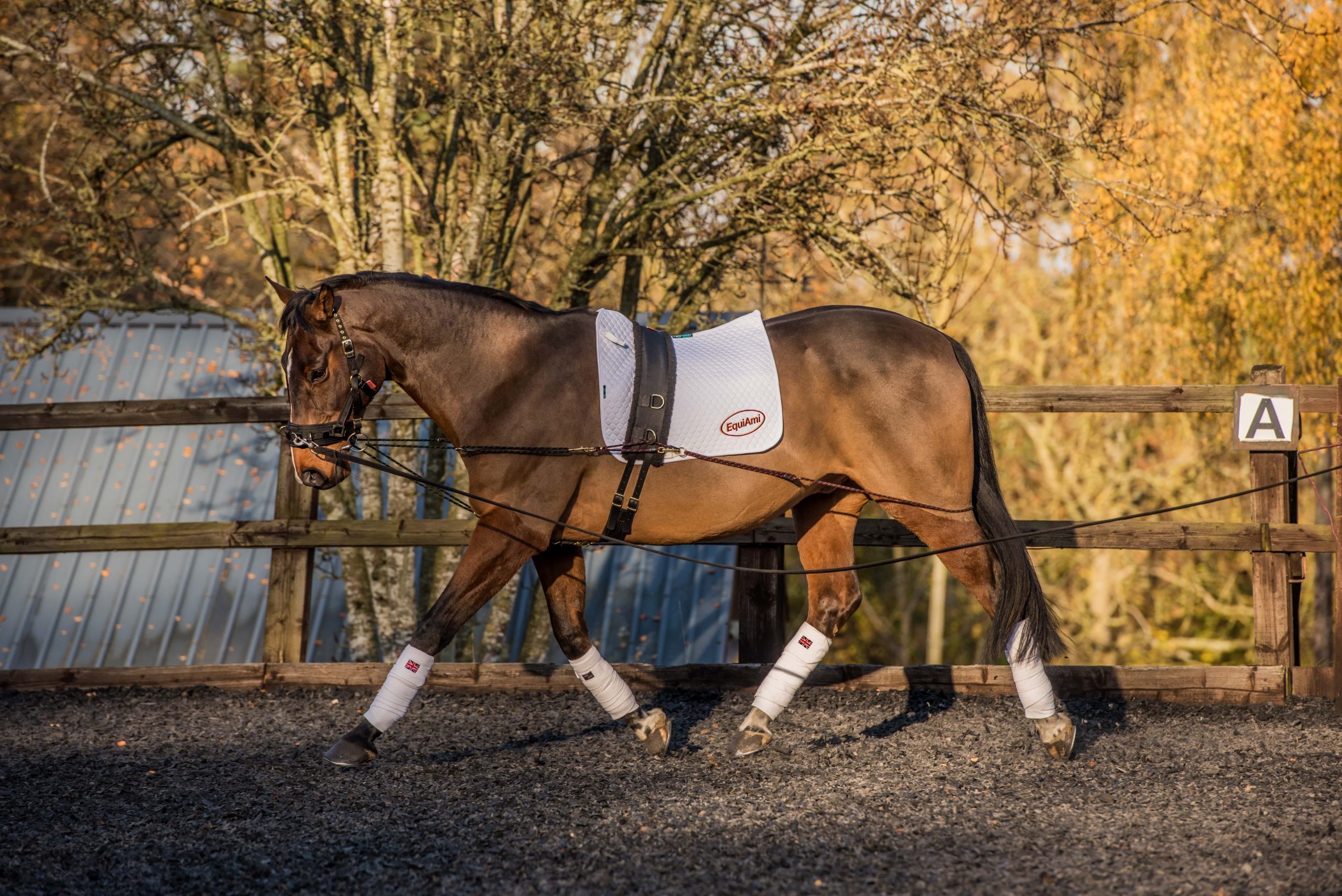When we ride our horse, we ride it in a loop. This loop consists of our right arm, right shoulder, left shoulder, left arm, left hand, left rein, the bit, the right rein, the right hand and back to the right arm. This loop gives and takes with the horse as he lengthens and shortens and moves with the horse around turns and circles to keep a soft, consistent contact. We are taught that, in order to have softness and acceptance in the horse, we need to keep a soft, consistent contact with the horse via this communication loop. When there is tension or rigidity in the loop caused by fixed hands or tight arms, we are met with resistance and tension in the horse.
We lunge our horses to give them exercises to do that build up their musculature and fitness in order to improve their performance under saddle, yet when we lunge them we generally put them in a training aid that places them in some sort of restraint by fixing or applying pressure. This is the opposite of what we endeavour to achieve under saddle. It is far more logical to lunge the horse in a training aid that works in a similar way to the way we ride them; to encourage a soft consistent contact and to discourage leaning and resistance.





The Equami has been an amazing tool to bring my barrel racing gelding back from his kissing spine diagnosis, both pre and post bone shave surgery. It has made all the difference for him! I’m not sure what I would do with out it. Thank you for this amazing product!